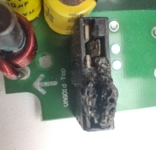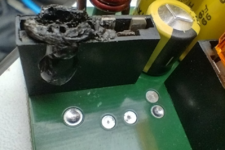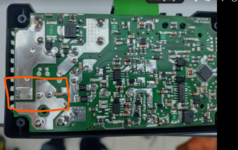- Jul 28, 2008
- 1,040
- 1,281
- Funster No
- 3,483
- MH
- Ducato Sportivo
- Exp
- Since 2005! 2000+ nights so far...
I know a few here have these, so just a word of warning.
Seems to be a design fault that causes an internal fuse to melt and potentially burn (!)
If you look in the LHS of the unit look for any heat damage or melted case on the side.
Our unit stopped working - said charging - but no voltage being sent "out" to the LBs.
Problem appears to be that internally there is a 40A blade fuse in PCB holders, and it appears the connection between the fuse and the holder is poor (over time? by design?) - increased resistance, gets hot, melts, bang. Its a 30A unit, but 30A@ 14.4v output, which could be 37+A @ 11.8v input... So almost maximum fuse rating.
Board and components all look fine - it appears to be only the fuse connection to the holder causing the problem.
I will modify ours and to have good connections to an external fuse.
Of course, opening case DOES void 3y warrantee - but if you need a solution quicker than the turn around to/from Germany.....





Seems to be a design fault that causes an internal fuse to melt and potentially burn (!)
If you look in the LHS of the unit look for any heat damage or melted case on the side.
Our unit stopped working - said charging - but no voltage being sent "out" to the LBs.
Problem appears to be that internally there is a 40A blade fuse in PCB holders, and it appears the connection between the fuse and the holder is poor (over time? by design?) - increased resistance, gets hot, melts, bang. Its a 30A unit, but 30A@ 14.4v output, which could be 37+A @ 11.8v input... So almost maximum fuse rating.
Board and components all look fine - it appears to be only the fuse connection to the holder causing the problem.
I will modify ours and to have good connections to an external fuse.
Of course, opening case DOES void 3y warrantee - but if you need a solution quicker than the turn around to/from Germany.....











